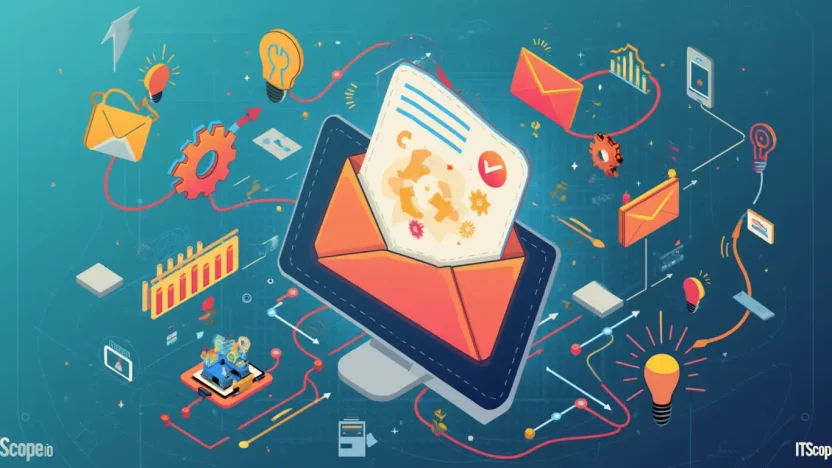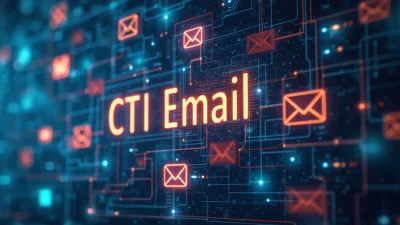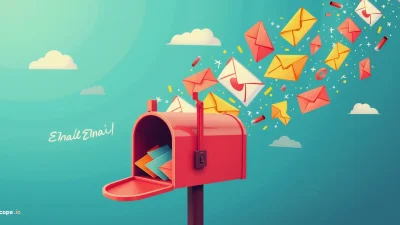In the bustling world of digital marketing, mastering the art of the coverage email can be the key to unlocking new opportunities and expanding your reach. Whether you’re a seasoned professional or just starting out, this comprehensive guide is your gateway to crafting emails that resonate, captivate, and, most importantly, convert.
Why is this skill crucial? Because in a sea of digital noise, standing out requires precision and a strategic approach. Through this article, you’ll discover the secrets to constructing coverage emails that not only catch the eye but also hold the attention of your recipients.
Ready to dive into a world where your emails are no longer ignored, but instead eagerly awaited? Let’s explore the ins and outs of coverage email mastery.
Here’s what we’ll uncover today in this in-depth guide.
Table of Contents
- What is a Coverage Email?
- Importance of Effective Coverage Emails in Communication
- Understanding Your Audience: The Foundation of Communication
- Crafting a Compelling Subject Line
- Perfecting the Email Body: Structure and Content
- Using Personalization to Enhance Engagement
- Dos and Don’ts of Coverage Emails
- FAQs on Coverage Email Strategies
- Conclusion: Transforming Your Communication Skills
What is a Coverage Email?
Have you ever wondered how journalists and PR professionals stay in sync? That’s where a coverage email comes into play. This crucial communication tool bridges the gap between news seekers and newsmakers, ensuring everyone stays informed. But what exactly is a coverage email?
A coverage email is essentially a concise yet informative message that updates all stakeholders on the progress or outcome of a media piece or event. It’s used in various industries but especially shines in the public relations realm. These emails keep everyone on the same page and facilitate effective collaboration. Think of them as the glue that holds your project discussions together.
Purpose of a Coverage Email
Coverage emails serve multiple purposes within the communications ecosystem. Here’s a quick rundown:
- Informing Stakeholders: Send a recap or an update about media interactions and outcomes.
- Enhancing Visibility: Keep everyone aware of coverage status, ensuring nothing falls through the cracks.
- Streamlining Communication: A single point of reference for all involved parties to reduce back-and-forth emails.
Coverage emails, when done right, can save time and enhance your communication strategy by providing clarity and continuity.
Elements of an Effective Coverage Email
To craft a stellar coverage email, make sure to include essential elements like a clear subject line, opening with core updates, relevant attachments, and a call-to-action if needed. This structure helps deliver your message succinctly while keeping your audience engaged.
Importance of Effective Coverage Emails in Communication
Have you ever wondered why some emails get immediate responses while others sit unread in an inbox? The secret often lies in how well the email is crafted. In the realm of professional communication, mastering the art of the coverage email can set you apart. Let’s explore why they matter!
Impact on Professional Image: Sending a well-structured coverage email demonstrates professionalism and attention to detail. It’s not just about conveying information but showcasing your competence.
Consider this: John, a project manager, consistently sends clear and concise coverage emails to his team. As a result, projects move smoothly and deadlines are easily met. This simple tool elevates John’s reputation as a reliable leader.
- Clarity and Conciseness: A stellar coverage email brings clarity. It presents updates and shifts in tasks transparently, ensuring everyone is on the same page.
- Efficient Time Management: Effective emails minimize unnecessary back-and-forth, saving valuable time and resources for both the sender and the recipient.
Quick Tips for Better Coverage Emails
To craft a coverage email that truly stands out, follow these basic yet powerful tips:
- Start with a Clear Subject Line: Make it precise and attention-grabbing.
- Keep it Short: Aim for brevity. Include all necessary details but avoid clutter.
- Use Bullet Points: Highlight key information using bulleted lists for easy scanning.
- Conclude with a Call to Action: Specify the desired outcome or the next steps clearly.
By focusing on enhancing these communication tools, you not only streamline your message but also bolster your professional standing in any team. In today’s fast-paced world, the ability to convey thoughts effectively through a coverage email can change the game entirely.
Understanding Your Audience: The Foundation of Communication
Why is knowing your audience crucial for crafting a compelling coverage email? Simply put, it’s the bedrock of communication. The effectiveness of a coverage email hinges on how well you grasp your audience’s needs and preferences. This understanding allows you to personalize your message, ensuring it resonates and prompts action.
- Identify Your Audience: Start by pinpointing who you’re communicating with. Are they tech-savvy developers or marketing professionals? Each group requires a different approach.
- Conduct Research: Use surveys, social media listening, and user feedback to gather insights about your audience’s problems, values, and interests. This data forms the basis of a tailored coverage email.
- Craft Personalized Messages: Leverage the insights gained to create messages that address specific needs and concerns, making your audience feel understood and valued.
- Test and Refine: Continuously measure the response to your coverage emails and tweak them based on feedback and engagement metrics. It’s a continuous cycle of improvement.
Imagine sending a coverage email to a group of developers and opening with a technical insight that directly addresses their current challenges. This kind of targeted communication not only grabs attention but also fosters trust.
Personalization is key. Tailoring your coverage email to your audience increases engagement and effectiveness.
Remember, mastering audience understanding isn’t a one-time task—it’s an ongoing process. By putting in the effort to know your audience deeply, your coverage email strategy will be significantly more impactful.
Crafting a Compelling Subject Line
Want to grab attention with your coverage email? Start with the subject line! A compelling opener ensures your email isn’t lost in the clutter. But how do you write one that packs a punch? Let’s dive into the steps.
- Be Clear and Concise: Your subject line should quickly inform the reader about the content of the email. Aim for clarity over cleverness. Avoid misleading phrases that may lead to disappointment.
- Personalize When Possible: Adding a personal touch, like the recipient’s name, can dramatically increase open rates. Consider: “[Recipient’s Name], Here’s How Our New Feature Benefits You!”
- Create Urgency: Phrases like “Urgent,” “Exclusive,” or “Only Today” encourage immediate attention. However, use them sparingly to avoid being labeled as spam.
Tip: An effective coverage email subject line hooks the reader while providing a glimpse of value.
Incorporate these tips to craft subject lines that boost your email open rates and drive effective communication.
Perfecting the Email Body: Structure and Content
Crafting a compelling coverage email can seem daunting, but focusing on structure and content ensures effective communication. Your goal? Stay clear, concise, and engaging. Let’s break it down into actionable steps.
- Start with a Strong Opening: Capture attention right away. Begin by addressing a specific need or interest of your recipient. For example, mention a recent achievement of theirs to build rapport.
- Clearly State Your Purpose: In the coverage email, communicate your main message within the first few lines. Specificity is critical—ensure it aligns with the recipient’s interests or issues.
- Add Relevant Details: Follow up your purpose with succinct, supporting information. Use bullet points for easier readability. Remember, less is often more.
- Include a Call to Action: Guide your recipient to the desired next step. Whether it’s a reply or scheduling a call, make it straightforward.
- Conclude Effectively: Finish on a positive note by thanking the reader for their time. Re-emphasize your call to action subtly.
“A powerful coverage email uses clarity and brevity to communicate its message effectively.”
Take these steps to refine every part of your email, transforming each one into a conversation starter that leaves a lasting impact.
Using Personalization to Enhance Engagement
Are you wondering how to make your coverage email stand out? Personalization could be the secret ingredient. Tailor your messages to connect more deeply with your audience.
- Start with the Basics: Use the recipient’s name in the salutation. Something as simple as “Hello, John,” catches attention and feels personal.
- Leverage Data: Analyze your recipient’s past interactions. Did they click on a previous coverage email link? Use this data to craft messages they are likely to open.
- Segment Your Audience: Not all recipients are alike. Create groups based on industry, interests, or job roles. This segmentation allows more targeted messaging.
- Include Relevant Content: Ensure your email content addresses specific interests or pain points of the recipient. This relevancy drives engagement.
Personalization Tools
Use modern tools like automation software to implement advanced personalization techniques. These tools can streamline processes, letting you focus on core messaging.
| Tool | Feature |
|---|---|
| HubSpot | Email personalization and automation |
| MailChimp | Advanced audience segmentation |
Personalizing your coverage email effectively engages your audience, building lasting relationships and fostering trust.
Dos and Don’ts of Coverage Emails
Mastering the art of a coverage email requires knowing what works and what to avoid. Do you want your email to stand out and leave a lasting impression? Follow these tried-and-true guidelines.
- Do Be Concise: Keep your message straightforward. Get to the point.
- Do Personalize: Use the recipient’s name and tailor the content to their role.
- Don’t Overshare: Stay focused on the subject without overwhelming details.
- Don’t Use Jargon: Avoid technical language that could confuse your reader.
Personalization Tips
By incorporating personal touches in your coverage email, you build rapport and increase engagement. Small details, like acknowledging a past successful project, can make a big impact. Remember, a well-crafted coverage email could be your ticket to effective communication.
FAQs on Coverage Email Strategies
What is a coverage email?
A coverage email communicates essential information and updates to stakeholders or team members. It’s crucial for maintaining transparency and ensuring everyone is on the same page about project progress or news.
How do I write a compelling coverage email?
Start with a clear subject line that captures the essence of your message. Use simple language and bullet points to break down key details, ensuring clarity and readability. Personalize your message to foster a connection.
What are the must-have components?
Include a greeting, a concise introduction, the main content with pertinent details, and a call-to-action. Summarize important points at the end for easy reference.
When is the best time to send a coverage email?
Mid-mornings or early afternoons on weekdays are typically ideal as recipients are more likely to read when they aren’t overwhelmed with fresh tasks.
Conclusion: Transforming Your Communication Skills
Mastering the art of a coverage email is a game-changer for your communication skills. By crafting concise and relevant messages, you’ll engage more effectively with your audience. Remember, clarity and simplicity are key. Practice these methods to elevate your everyday correspondence, ensuring your emails are impactful and memorable. As you embed these techniques into your routine, you’ll notice a distinct improvement in responses and engagement. Ready to transform your communication skills with coverage emails? Now’s the time to start crafting!



